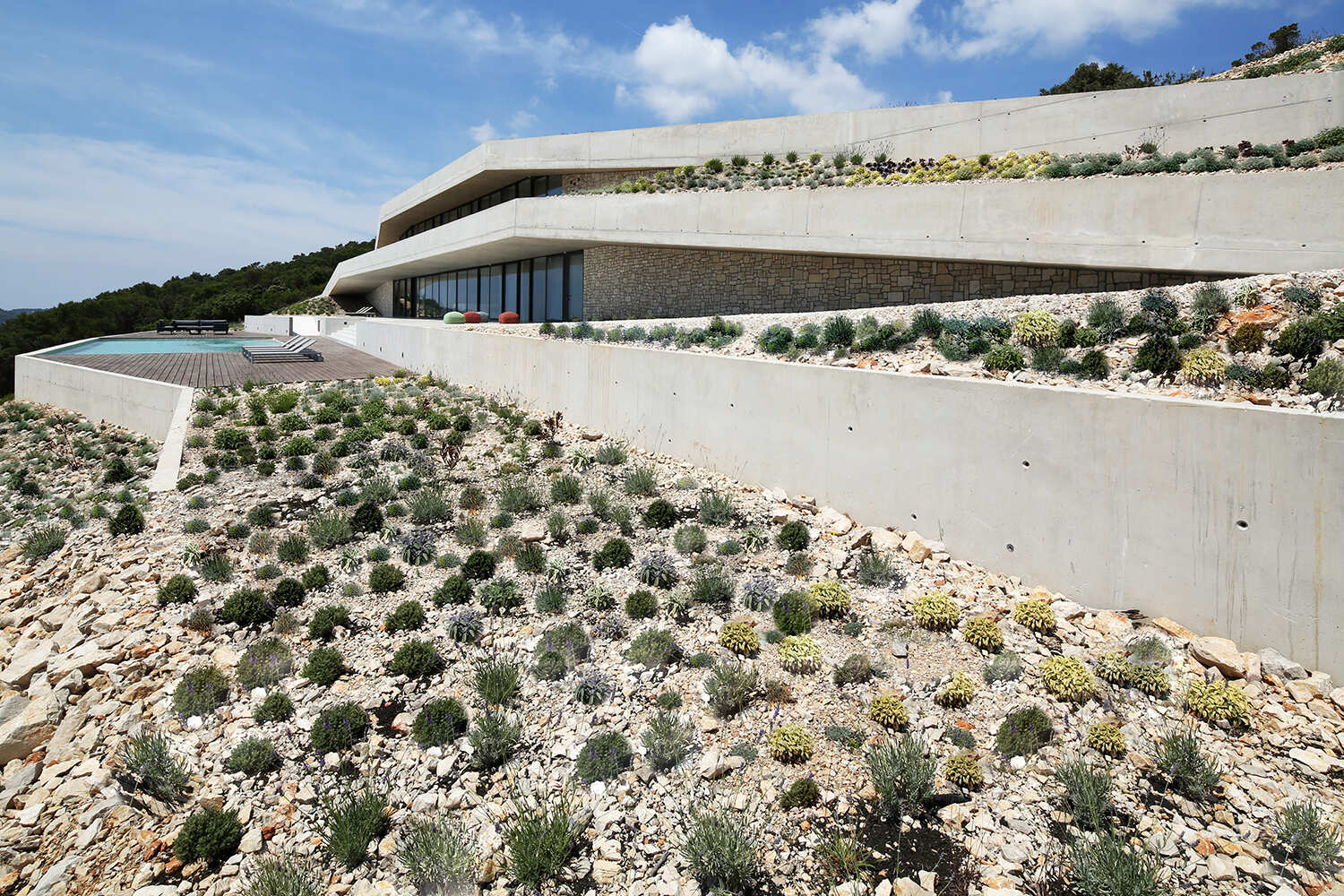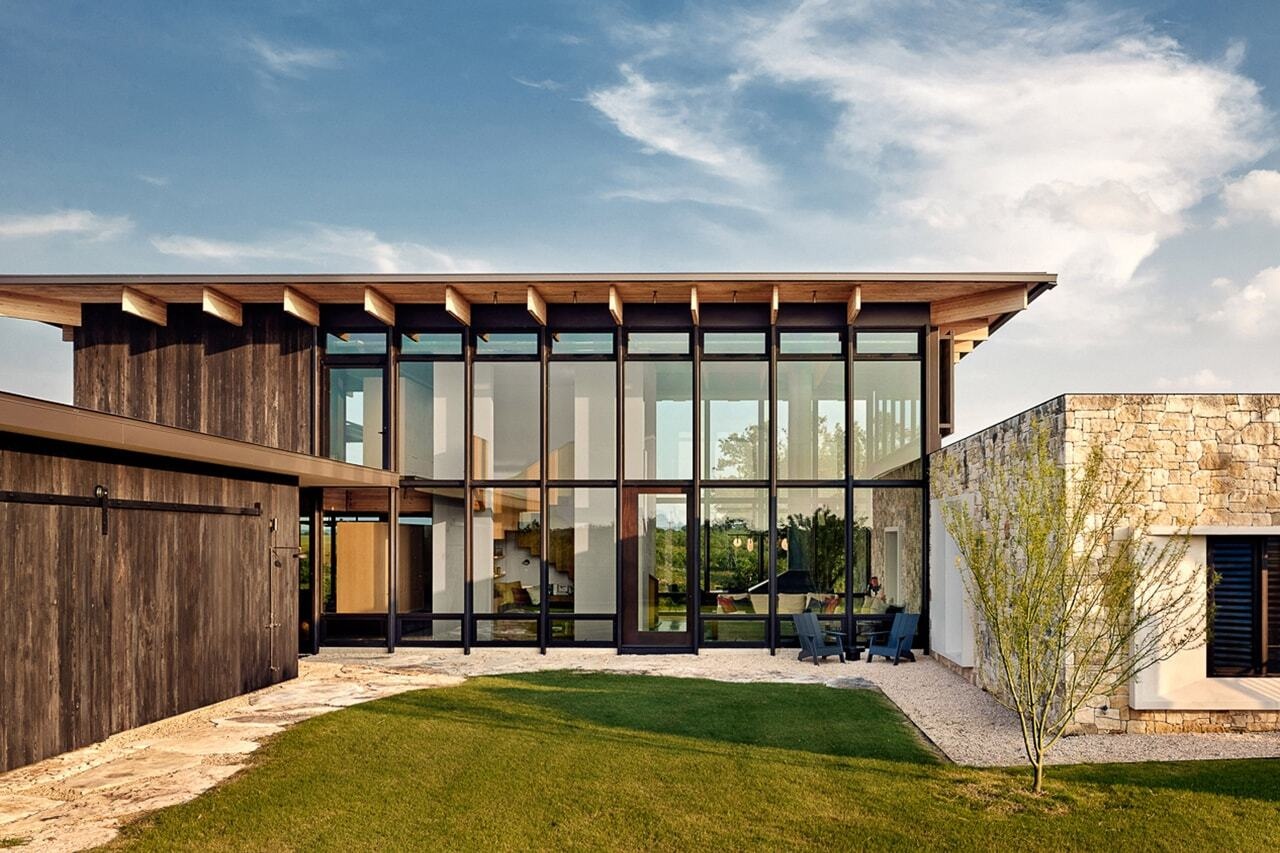Ten projects that showcase Arne Jacobsen's remarkable range


The Designs of Arne Jacobsen book explores how modernist Arne Jacobsen fused design and architecture. Here, its authors round up 10 of his key projects, from textiles to a suburban town hall.
While Jacobsen is one of the best-known Danish designers of his era, authors Thomas Dickson and Henrik Lund-Larsen believe that he is seen predominantly as an architect.
They hope that their book will help bring attention to the versatility of his work, which ranged from the small scale, such as cutlery, to large architecture projects.
"Most books about Arne Jacobsen focus on him being an architect," the authors told Dezeen.
"Maybe because these books are often written by Danes, and in Denmark he is seen mostly as someone who designed buildings and, on the side, he designed furniture, lamps and other products," they added.
"So, we saw that there were a lot of stories that hadn't been told yet."

Though his designs are very of their time – Jacobsen was one of the most important creatives in the mid-century-modern design movement – the authors argue that they remain relevant today.
"His designs still look really modern today; they have a kind of air about them that makes them look fresh and sexy," Dickson and Lund-Larsen said.
"That's probably why Jacobsen's chairs are often seen in music videos, ads and interior magazines," they added.
"An Egg Chair, for example, can be a really good place to be sitting as a public figure, like an actor or a rock star; it's a perfectly framed stage that doesn't demand all the attention."
Read on for the authors' picks of Jacobsen's most remarkable projects from The Designs of Arne Jacobsen: Interiors, Furniture, Lighting and Textiles, 1925-1971:

Søllerød town hall, 1941
"Whenever possible, Jacobsen would take it upon himself to design everything related to his building projects. That is also the case in the city hall in the suburban town of Søllerød, 10 miles north of Copenhagen.
"The competition was won by him and his old classmate Flemming Lassen in 1939 and the building was completed in 1942. Every detail inside the building is designed by the two architects, from chairs and lamps, to door handles, clocks and the lettering for the signs.
"The town hall is listed and still stands, with only minor changes to the interior of the building."

Lemons in Net for Textil Lassen, 1948
"Jacobsen managed to design almost 150 textiles – with a lot of help from his wife Jonna. It really began because Jacobsen, who was Jewish, had to flee with Jonna to Sweden in October 1943. Here, they made a living based on Arne's talent for painting watercolours and Jonna's training as a textile printer and designer.
"The motifs were often romantic – flowers, plants and everyday life – maybe a longing for peace and a brighter future. A good example is the textile from 1948 – Lemons in Net – colourful and happy. Later, in the 1960s, their designs became more abstract and geometric.
"The textiles were for all sorts of purposes: curtains, upholstery, table cloths and even women's dresses. Most of the patterns were also used for printing wallpaper."

The Ant, 1952
"The textile production in Sweden taught Jacobsen the advantages of industrial manufacturing, and that one can achieve almost the same level of quality there as in handcrafted products.
"In the early 1950s, his design of a range of lightweight laminated chairs began with the famous Ant in 1952. Later came the 7-chair, the Grand Prix and several other models in many variations.
"The recipe was simple: a three-dimensional shell that makes for both the seat and back rest, mounted upon a minimalistic set of legs in bent tubular steel. The development process was not that simple; it took a year for Arne Jacobsen and his young assistant Verner Panton, along with Fritz Hansen, to master this new technology. But then a success was born."

Furniture for Munkegaard School, 1955
"In the middle of the 1950s, the building industry in Denmark was finally up and running again and many schools were designed at that time due to the boomer generation.
"The Munkegaards School, designed by Jacobsen and completed in 1957, is now a listed building. It is almost a little village in itself with every class having their own private garden.
"The classrooms had daylight coming in high from the left giving an even illumination of the whole room, also the far-right aisle. For the school, Jacobsen designed the furniture (in three sizes), ceiling lamps and even the loudspeakers."

Munkegaard School, 1955
"One of Jacobsen's passions was gardening. His own small private garden was meticulously planned and executed. He kept a list of his many exotic plants precisely marked on a map, which also lent its motive to a later textile.
"Professionally, he also used his interest and knowledge in garden work. The small courtyard gardens for each classroom at The Munkegaard School are a good example. These gardens are secluded spaces for the pupils during recess, and Jacobsen even managed to supply them with copies of classical sculptures and reliefs."

The AJ door handle, 1956
"Many of Jacobsen's buildings, especially from the later part of his career, are very straight-angled and built in steel and glass. To contrast this, he often designed the elements that touched the human body, like chairs, cutlery and door handles, in organic shapes.
"The AJ door handle was first used in The Royal Hotel from 1960, but can today be bought and mounted in your own house."

Rødovre town hall, 1956
"Throughout his career, Jacobsen closely followed the movements within the architectural world and was quite often inspired by what he saw on trips and by reading architectural journals. More than once, he was accused of copying.
"One example is the town hall of Rødovre, just outside Copenhagen, which was completed in 1956. The exterior of the building looks very much like the General Motors Technical Center in Warren, Michigan, from 1950, designed by Eero Saarinen."

The AJ cutlery, 1957
"Jacobsen often tried to minimalise the design and emphasise proportions, which he had an eminently good eye for. It can clearly be observed in his smaller product designs, like the AJ cutlery series. Every curve and detail has received an elegant treatment in order to please the eye, maybe even more than pleasing the hand.
"He designed three different flatware product lines in the late 1950s, including one for the Royal Hotel that opened in 1960. But only the AJ series has survived until today."

The Swan and the Egg, 1958
"Jacobsen was fascinated with new technology and industrial production. This became clear again later in the 1950s, when Fritz Hansen acquired the rights to use a patent for hardening styropor so it was ridged enough for furniture use. With this invention in hand, Jacobsen came up with a series of upholstered furniture for The Royal Hotel in Copenhagen.
"Today, the best known of these chairs are The Egg (pictured) and The Swan, but also The Drop and The Pot are part of the family. The Swan was originally designed for lamination, a low and wide version of the Ant. Many of his chairs from this decade have a distinct contour line as their primary design feature."

The Kubeflex modular house, 1969-70
"In Jacobsen's late years, he worked intensely with several projects for flexible, movable and industrially manufactured buildings. Only one was close to completion when he died in 1971, and that was Kubeflex. It consisted of square, cube-like modules that could be transported from the factory to the site on a standard flatbed truck.
"These elements could be linked to each other and fitted in numerous ways with windows, doors, panelling, etc. A special bathroom unit was also designed. Only one of these clusters was built and functioned for many years as a vacation house for the Jacobsen family.
"It has since been renovated and moved to the museum of Trapholt near the town of Kolding in Southern Jutland, where it is now on permanent display."
The Designs of Arne Jacobsen: Interiors, Furniture, Lighting and Textiles, 1925-1971 is published by Prestel Publishing on 2 September.
The main photo is by Anker Tiedeman.
The post Ten projects that showcase Arne Jacobsen's remarkable range appeared first on Dezeen.



















































